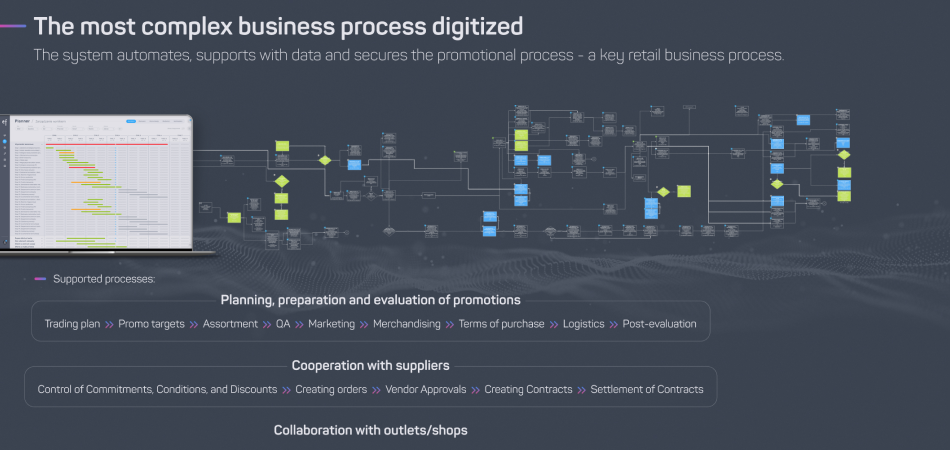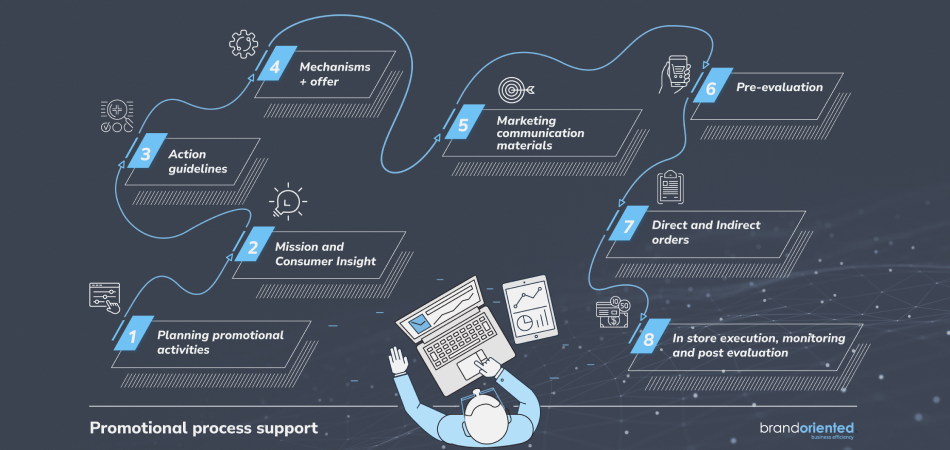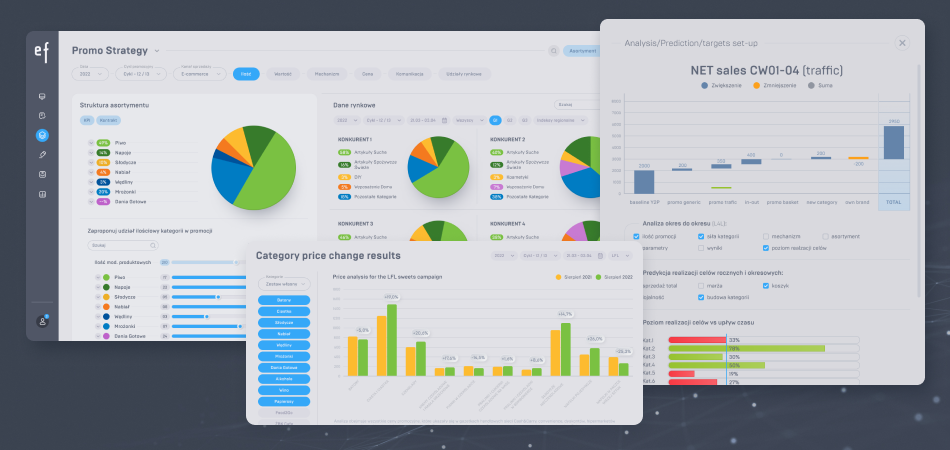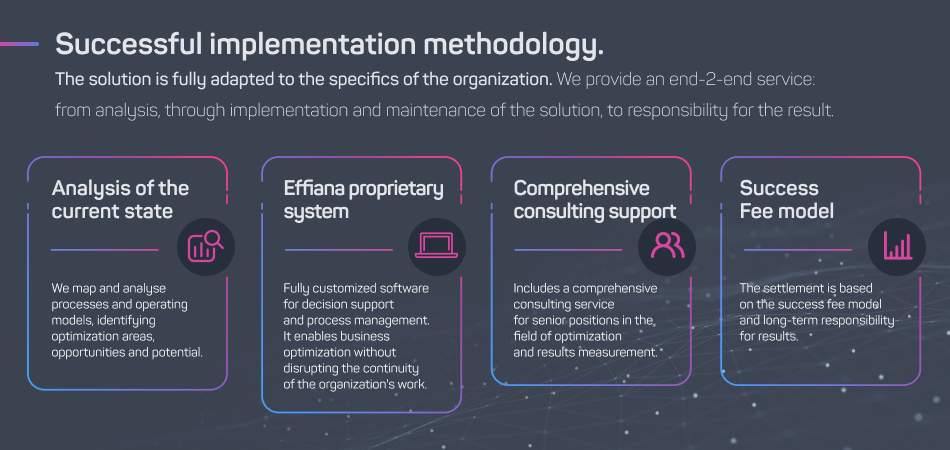
The average person receives 250,000 stimuli a day. It’s is a plethora of messages that penetrate our subconscious and consciousness every day. Advertisements about so-called exceptional offers, brands, great promotions and the best deals pop up on phones, VOD, and IoT.
Until recently, marketers were waiting for Customer 6.0 to be able to use the form of communication more accurately and reach recipients more effectively. Today, Customer 6.0 is here, but can we effectively use the benefits of digital technologies as promotional teams? Customers today are equipped with digital tools and know how and where to look for the best deals. Digital channels have dethroned mass communication, and the ongoing fragmentation of digital media requires additional work from promotional teams. Mobile applications, promotions dedicated to segments are a promotional offer that is increasingly personalized and more and more often precisely responds to the needs of the end consumer.
Digital channels, as well as traditional channels, are operated by the same processes, only the communication tools and target group selection differ. This proves the importance, role and complexity of the promotional process. Regardless of the channel - modern or traditional - our offer must be "outplayed" and all this must be done effectively, coherently and valuable enough to beat the competition's offer and direct the consumer to our store. Hence, the promotional machine is often compared to the bloodstream of commercial organizations.
How then do large organizations respond to the need to better match the offer and message to the changing reality and unique needs of customers? Market leaders openly talk about hyper-personalization of promotions. We are still waiting for this effect, but the race has already begun. The process in retail has been the same for years, but new tools have appeared that help match the needs of consumer 6.0. The promotional process is and will remain for a long time the main activity of any commercial organization, which in repeated cycles provides the customer with dopamine so that he can say without fail: "YES, I want to order this".
Today, the macroeconomic environment is not helping, optimistic forecasts for Europe include a 2 percent recession, double-digit inflation, a decline in GDP and weakening purchasing power - these are indicators that do not drive the economic situation. Covid or the war between Russia and Ukraine are not conducive to the development of the market. That is why in every organization all powers and resources join forces, such as: SALES, MARKETING, TRADE, DIGITAL, MARKETING COMMUNICATION and the foundation, i.e. LOGISTICS and OPERATION. All hands on deck to ensure success in the most complex process of building a competitive advantage and be able to continue to generate growth in such a difficult environment.
Trade promotions are the most complex, multi-level process - from planning to execution - and today much depends on strong teams that can communicate and work with data. It is these teams that make tens of thousands of decisions every week, affecting the business results of the organization and the implementation of its strategy. Decisions can be made based on complete or fragmentary data, memory or intuition. The decision-making itself is even more complex as the processes of preparing trade activities are constantly overlapping at various stages and there could even be as many as a dozen or so of them at the same time. Where is the margin for ordinary human fatigue?
Promotions are a very engaging and demanding process where there is no room for error, which is why technology is crucial to ensure that the message reaches the recipient at the right time, and that the product or service is available at the best price.

As Brand Oriented, for years we have been observing the activities of promotional teams in various categories of fashion, food, retail, fmcg, wholesale, and on-trade, because this is where the risk of error is greatest. Inefficiencies in this process multiply, scale many times and are visible in the results and at the level of execution of subsequent promotional cycles carried out in individual stores.
Based on our experience, we defined the key elements behind promotional success. The effectiveness of promotion is closely related to the proper definition of the strategy and the ability to implement it. The additional context gives transparency and controllability of activities, allowing supervision at every stage. It is also important to properly allocate employees' time, with maximum relief from performing repetitive activities that can be carried out with the use of technology.

Today, there are already tools available on the market that allow you to use data integration and coordinate the activities of individual teams and units in the promotional process. Just as Google uses our email account to suggest trips abroad or remind us about the departure and the need to complete paper work, the integrated promotional ecosystem makes sure that decisions are always made taking into account the context of data and regulations dedicated to a given organization. By implementing such tools, market leaders ensure a technological advantage that aims to:
- put large organizations back in control
- initiate processes and relieve people of the need to remember about repetitive activities
- minimize the risk of human error
- recommend the most effective promotional scenarios
The race for the customer started a long time ago, now technology has entered the game, which gives promotional activities a new pace and quality.

What then has changed in the promotional process and its final outcome?
Still, the process involves all key front office resources, from strategic to operational functions. However, paradoxically, the final product is invariably commercial promotions available to the consumer. So where is the change? It may be less visible on the market, but viewed from the inside of the organization, it is a fundamental change, regarding better matching of the offer, better communication and better selected promotional mechanisms. It is also a change in the selection of media and channels to reach the recipient, so that the impact is definitely more effective, and meets the needs of customers or creates them.
Today, technology is able to ensure proper promotional communication, even at the level of price communication in the store - it ensures that the right price labels are displayed in a specific place on the shelf. A properly integrated promotional process allows you to automate repetitive activities even for teams of more than 200 people. Promotions still remain the most important tool of communication with consumers.
From the market perspective we can see how new communication platforms are being implemented that emphasize the brand strategy - and promotions are invariably the best way to contact the consumer. On the one hand, they maintain a constant presence of the brand in the consumer's world, on the other, it has a chance to convey a promise that is fulfilled in the short term by the offer, and in the long term - by the shopping habit and experience of successful shopping.
Looking from the "inside", with consistent strategy and execution, a successful promotion implementation entails making the right decisions based on knowledge and data that are always available contextually and are the basis for decisions at every stage. This approach always results in an increase in the shopping cart or the number of transactions. The introduction of technology allows you to turn all activities and team engagement into measurable success. Communication, product, promo offer and consumer meet in the same place - with the aforementioned "YES".
Therefore, the process still involves the same teams, including additional functions responsible for implementing media or modern channels, such as e-commerce, quick commerce, etc. The technology, by integrating data, simplifies everyday choices and decisions and eliminates repetitive activities, measuring the effects in the form of aggregated dashboards . Thanks to this, as well as thanks to the adapted UI/UX, employees are up to date in the operational process (what stage it is at and what is happening), but also in relation to, for example, tactical data, such as:
- competitor's SKU price vs my SKU in the online promotion
- settling contracts with suppliers
- building or saturating product distribution online.
In conclusion, below are the TOP 3 least effective schemes and actions in processes, regardless of the organization:
- working in a silo model, where knowledge functions only in the files of individual users
- untapped potential of data for decision-making
- resources focused on repetitive activities, easy to automate, instead of making conclusions and decisions
Where are you headed, Costumer?
In 2021, the share of the online channel in the retail sale of goods in Poland is 13%, while PLN 187 billion is the projected value of the e-commerce market in Poland in 2027. On the other hand, the value of the e-commerce market in Poland in 2021-2027 will increase by over PLN 94 billion. 54% of the increase in the value of the e-commerce market will come from the following categories: fashion, electronics and health. These are unequivocal forecasts indicating that each year shows progressive automation and digitization.
That is why we see that the optimization and digitization of processes and their automation are the key to success. Working with market leaders, we have developed a proprietary method that allows you to start the diagnosis process with minimal involvement of front-business teams. We make sure that, on the one hand, we build a strong foundation of knowledge about the organization's processes in the current model ("AS IS"), and then, together with the teams, we transform into optimized and target processes, the so-called "TO BE". In cooperation with teams, the most interesting fact is that it is enough to show the existing situation in a transparent and understandable way for the teams to "raise" 20% of the indicated inefficiencies themselves. Such a responsible approach restores faith in responsible managers and employees of the organization from the front line.
In everyday work, no one has time to look at the whole sequence of processes and sub-processes. BrandOriented's role is to show and comment on inefficiencies, but - more importantly - suggest possible solutions to problems. Finally, always in cooperation with the team, the recommendations are translated into effective solutions, adaptable to the needs of a given organization. This type of approach clearly shows that the first step on the way to digitization does not require technology, and yet it brings 20% of the result and is fast.
The next step is project phasing, and this is where the Pareto principle works most often - the implementation of individual functional modules, taking into account the client’s IT architecture in such a way that 20% of the expenditure fixes 80% of the inefficiency in the process. Today, thanks to modular technologies, the implementation allows you to properly integrate data and processes and start them up, so that teams can feel the benefits of the change right after implementation.

The first step related to consulting is a small decision and low cost, and it initiates a key and inevitable change - in pursuit of a consumer whose expectations are still growing. How to deal with today's and tomorrow's market changes is known to those who have already started their journey related to the digitization of the promotional process, others will only follow.
Originally published on Wiadomości Handlowe.
